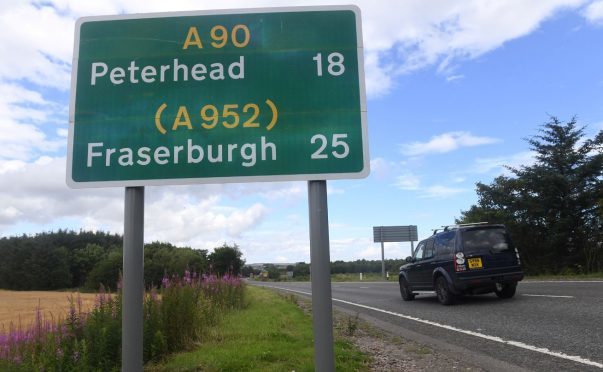A major north-east road has become Scotland’s most deadly – even overtaking the notorious A9.
Nearly 150 people have been seriously hurt on the A90 Perth to Fraserburgh road over the last four years, with 35 killed.
The figures have emerged just weeks before the controversial average speed cameras go live between Dundee and Stonehaven.
According to the data, obtained by the Liberal Democrats, the number of accidents on the A90 was almost a third higher than that of the A9 Perth to Inverness route, where major dualling improvement works are currently under way.
A total of 147 people have been seriously hurt on the 175-mile stretch Perth to Fraserburgh stretch, compared to the 94 on the A9. Twenty-six people have died on the A9 since 2013.
On the A96 Aberdeen to Inverness route – also listed as one of the most dangerous trunk roads – there have been 79 serious accidents, of which nine were fatal.
The figures, which also revealed a total of 1,185 serious crashes on Scotland’s roads in the three years to 2016, with 242 people killed, have prompted renewed calls from campaigners for the Scottish Government to do more to tackle road safety.
Last night, North East MSP Mike Rumbles said: “We need to ensure that we do what we can to make our roads as safe as possible.
“Our emergency services do fantastic, lifesaving work responding to accidents as they happen but they need the government to back them up too.
“Clearly, major infrastructure projects take time. But we have already been waiting for years to see improvements to roads like the A96. The SNP came into government in 2007 pledging urgent action to improve trunk roads to the north and north-east but next to nothing has happened and the results speak for themselves.”
A Scottish Government spokesman stressed the number of fatal smashes had fallen over the last 10 years.
“For all roads, deaths are down 35% compared to 2004-2008. But one death is one too many.
“Scotland has made significant progress. Decisive action such as lowering the drink-drive limit, the introduction of average speed cameras on the A9 as well as education, and training, has undoubtedly made a difference.
“We are far from complacent and recognise more can be done.”
Last month, Transport Minister Humza Yousaf said he was confident the average speed cameras being installed on the A90 would help the route rid itself of its deadly reputation.
“Average speed cameras are about road safety, and these systems have been a proven success,” he said.
“Unfortunately, the A90 consistently features as one of the trunk roads in Scotland with the highest collision statistics.
“With the improved driver behaviour that average speed cameras bring, we will also see a significant reduction in the number of drivers receiving fines and penalties.
The £2million project, which commenced in May, will feature 30 cameras in total – 15 in each direction – located three or four miles apart between Dundee and Stonehaven.
